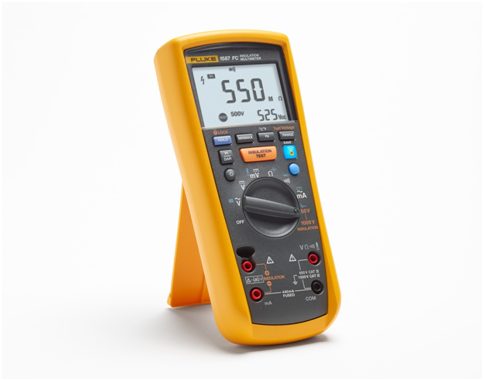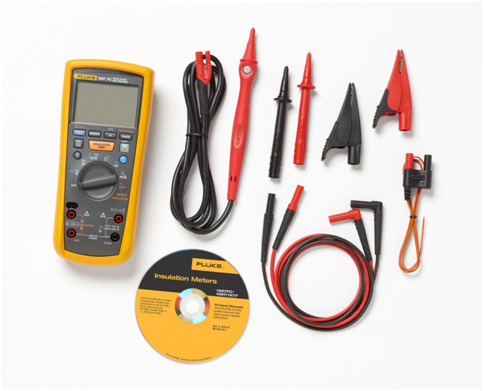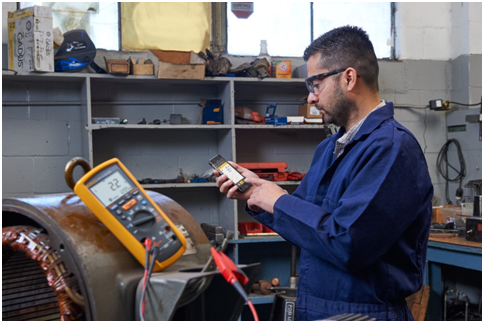Overview: Insulation multimeter is used by technicians to perform insulation resistance tests on conductors, electrical parts, circuits, and devices to: verify the quality of electrical equipment, ensure equipment meets regulations and standards, determine equipment performance over time, and determine the cause of failure A functional instrument.

Cover
First, the importance of insulation resistance measurement
Maintenance technicians use insulation resistance tests to minimize equipment failures or failures and maximize production efficiency. At the same time, it can also prevent the occurrence of dangerous accidents such as electric shocks and fires and protect the personal safety of employees.

figure 1
Second, the insulation resistance measurement process
1. Before using the insulation utility meter test, the technician must first perform basic voltage, current, and resistance measurements.
2. After the device is powered off, use a FLUCK insulation multimeter to determine the integrity of the windings or cables in the motor, transformer, and switchgear. Insulation resistance measurements and leakage current measurements are made on the insulation material, resulting in an insulation resistance value, see Figure 2.

figure 2
Third, safe operation
(a) Before the test
1. Work on unpowered circuits as much as possible, using proper locking/tagging procedures
2. Assume that the circuit under test is energized and use appropriate personal protective equipment and safety tools.
3. Remove all jewellery and stand on a rubber insulated rake.
(B) When testing
1. Do not connect the insulated utility meter to live conductors or live equipment and strictly follow the manufacturer's recommendations.
2. Turn off the device under test through open circuit fuses, switches, or circuit breakers. Lock and mark the device under test.
3. Disconnect the branch conductor, ground conductor, and all other equipment from the unit under test.
4. Discharge the conductor capacitors before and after the test.
Third, pay attention to matters
1. Check the de-energizing circuit for all leakage current through fuses, switchgear and circuit breakers. Leakage currents can cause inconsistent readings and errors.
2. Since the instrument will generate an arc when the insulation is damaged, do not use an insulation resistance tester in a hazardous or explosive atmosphere.
3. Do not use insulation resistance testers on electronic devices.
4. Use insulated rubber gloves with leather protection when connecting test leads.
Fourth, the principle of maintenance
(I) When the equipment is installed and updated
It will avoid the existence of wiring errors and defective equipment in the system, guarantee the installation of quality, prevent electric shock or equipment from causing fire.
(b) Elimination of danger
By carrying out the rolling insulation resistance test between the current-carrying conductor and the grounding conductor, maintenance personnel can eliminate the possibility of a dangerous short-circuit or short-circuit to ground.
(c) Preventive
Routine monitoring of the insulation resistance value using an insulation multimeter can provide information on the status of insulation degradation and ensure timely repair or replacement of equipment.
Tractor Hydraulic Cylinder is a type of hydraulic actuator that is commonly used in agricultural machinery such as tractors. It is designed to convert hydraulic power into mechanical power, which is used to perform various tasks such as lifting heavy loads, pushing and pulling implements, and steering the tractor.
The hydraulic cylinder is made up of a piston, a cylinder barrel, a rod, and various seals and bearings. Hydraulic fluid is pumped into the cylinder, which causes the piston to move and exert force on the rod. The rod then moves the attached machinery, such as a plow or a front-end loader.
Tractor hydraulic cylinders come in various sizes and shapes to accommodate different tractor models and tasks. They can be single-acting, where hydraulic fluid is supplied to one side of the piston, or double-acting, where fluid is supplied to both sides. Double-acting cylinders are more versatile and are commonly used in tractors.
Maintenance of hydraulic cylinders is important to ensure their longevity and optimal performance. This includes regular inspection and replacement of worn seals and bearings, as well as cleaning and flushing the hydraulic system to prevent contamination.
Tractor Hydraulic Cylinder Factory,Tractor Hydraulic Cylinder Manufacturers,Tractor Hydraulic Cylinder Suppliers,Hydraulic Cylinder For Tractor,Tractor Top Link Hydraulic Cylinder
Zhejiang Hanying Technology Co., Ltd. , https://www.hydraulicfactory.com